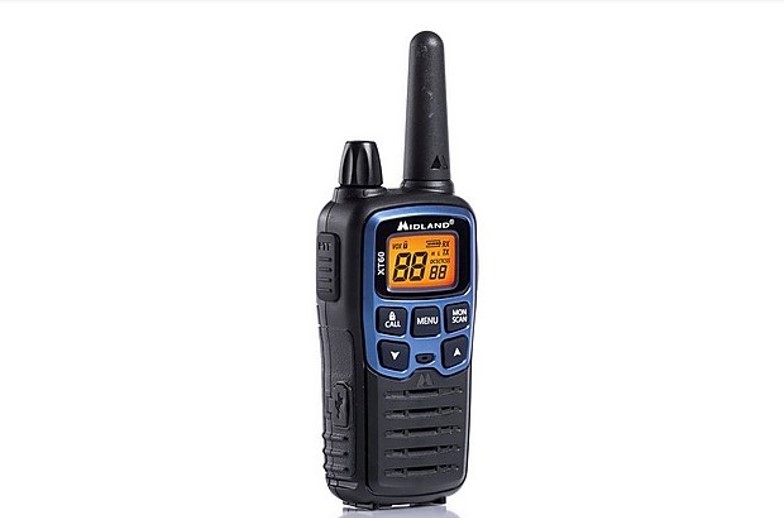Gadget of the Week
Gadget of the Week: 2-way radio still has long life
Walkie-talkies seem a relic of a bygone era, but they offer tremendous benefits, writes ARTHUR GOLDSTUCK after trying out the Midlands XT60.
Remember walkie-talkies? Before smartphones, they were a staple of crime and policing movies, and many thought they were among the most wonderful toys that boys could have. Those that couldn’t afford them, would use tin cans and strings to replicate a semblance of the experience, talking round corners a few metres apart.
In reality, the functionality of 2-way radios still offer tremendous advantages over smartphones, but perhaps not over a few metres.
Instead, try 10km.
That’s the range of the new Midland XT60 Two-Way Radio, a pair of dual band walkie-talkies that offer 93 channels. It is the first walkie-talkie we’ve seen with a Micro USB charger, providing a fast charge, meaning it is quickly read for action again after the batteries are depleted. The batteries included with the set provide a 12-hour battery life.
We tested the devices in city and park landscapes, over a few dozen metres and over 8km. The speakers are clear and powerful, offering crisp communications. In a city environment, however, the numerous security services that still use such devices tend to clog up many available channels. On the other hand, with over 69 LPD bands – those are licence-free UHF bands – and 24 Private Mobile Radio license free channels, it is easy to find clear channels.
Why would you use 2-way radio if you have a smartphone? That question has become easier to answer in an era of load-shedding and constant power outages. When cellphone towers die, walkie-talkies still provide reliable communication. In emergency situations, when immediate and uninterrupted communication is essential, they come into their own.
They are also far tougher than smartphones, built to withstand harsh environments and extreme weather, giving them an edge on construction sites and in industrial applications. They are quick and easy to use, with only the use of channels and the sequence of pushing a button and talking having to be learned. That means a learning curve of, oh, about 30 seconds.
The Midland XT60 has 9 voice levels, 5 call tone levels, along with a volume knob, and a VOX function that allows hands-free communication by detecting voice activity.
One of the biggest advantages of all, over smartphones, is the low cost of purchase and use. The Midland XT60 comes at the price of an upper entry level phone. But, most significantly, there is no cost whatsoever for ongoing use. No subs, no call charges, and no licence fees.
Is it any wonder they have survived the era of universal personal mobile communications?
How much does it cost?
Recommended retail price of R1899 from Cape Union Mart or online at www.capeunionmart.co.za
Why should you care?
We asked Bing AI to tell us why 2-way radio remains important. It told us:
“Two-way radio, also known as walkie-talkie, is a device that can transmit and receive voice messages over a short or long distance. It is widely used in various industries and scenarios, such as construction, security, hospitality, events, public safety and emergency services. Despite the rapid development of mobile phones and other communication technologies, two-way radio still has a long life because of its many advantages over smartphones.
“One of the main benefits of using two-way radio instead of mobile phones is that it provides reliable service during emergencies. Cell service towers and landlines may fail during a disaster or crisis situation, leaving people without any means of communication. However, two-way radio operates on its own frequency band and does not depend on any external infrastructure. This means that two-way radio users can stay connected with each other even when other networks are down or overloaded. This can be crucial for saving lives and coordinating rescue efforts.”
What are the biggest negatives?
· It can be hit and miss getting the right channel, particularly in an environment with numerous security operators.
· Micro USB is a charging breakthrough for 2-way radio, but still old technology, at a time when most other devices are moving to type-C USB, meaning that one still has to carry around multiple charging cables.
What are the biggest positives?
· Small, lightweight, durable and convenient. Can slide into a pocket or clip on a belt.
· Long battery life and quick charge via Mini USB.
· Extremely cost-effective, with low upfront price and no ongoing usage or roaming cost.
· Excellent sound quality, superior to that of most cellphone calls.
* Arthur Goldstuck is founder of World Wide Worx and editor-in-chief of Gadget.co.za. Follow him on Twitter on @art2gee









